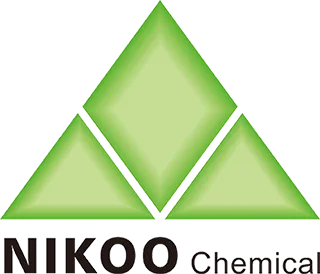Core whitening ingredients and their mechanisms of action in skin care products
Skin whitening, or brightening, focuses on reducing hyperpigmentation (like age spots, melasma, and post-inflammatory hyperpigmentation) and achieving a more even skin tone. This is primarily achieved by targeting the complex process of melanogenesis—the production of melanin by melanocytes in the skin.
Here is a detailed breakdown of the most effective categories and ingredients:
1. Tyrosinase Inhibitors
This is the most common and direct approach. Tyrosinase is the key enzyme responsible for converting the amino acid tyrosine into melanin. Inhibiting this enzyme reduces melanin production at the source.
- Kojic Acid:
Source: Derived from fungi like Aspergillus oryzae.
Mechanism: A chelating agent that binds to the copper ions within the tyrosinase enzyme, rendering it inactive.
Note: Can be unstable and cause sensitivity in some individuals. - Arbutin (Alpha-Arbutin):
Source: Naturally found in bearberry, cranberry, and blueberry leaves. Alpha-Arbutin is a synthesized, more potent and stable version.
Mechanism: It acts as a "pro-drug." Once applied, it is slowly hydrolyzed by the skin to release hydroquinone, which then inhibits tyrosinase. This controlled release makes it gentler than pure hydroquinone.
- Tranexamic Acid:
Source: A synthetic lysine analog.
Mechanism: A multi-targeted ingredient. It not only inhibits tyrosinase but also blocks the interaction between melanocytes and keratinocytes (the skin cells that receive melanin), which is often triggered by UV exposure or inflammation. Particularly effective for melasma.
- Niacinamide (Vitamin B3):
Mechanism: A multi-functional powerhouse. In terms of brightening, it primarily works by inhibiting the transfer of melanosomes (the packets containing melanin) from melanocytes to the surrounding keratinocytes. This prevents the pigment from reaching the skin's surface and becoming visible.
- Resorcinol Derivatives (e.g., 4-Butylresorcinol, Phenylethyl Resorcinol):
Mechanism: These are potent, synthetic compounds that structurally mimic tyrosine, the substrate of tyrosinase. They competitively inhibit the enzyme, effectively reducing melanin production.
2. Antioxidants & Inhibitors of Oxidation
- Vitamin C (L-Ascorbic Acid) and its derivatives (SAP, MAP):
Mechanism: A multi-functional ingredient with a key brightening role.
--Antioxidant: It neutralizes free radicals generated by UV exposure, which can trigger melanin production.
--Inhibits Oxidation: It reduces *o*-quinone (a melanin precursor) back to *o*-diphenol, effectively slowing down the melanin synthesis pathway.
--Tyrosinase Inhibition: It also directly interferes with the tyrosinase enzyme.
3. Cell Turnover Accelerators
These ingredients don't directly affect melanin production but help shed pigmented surface cells more quickly, revealing fresher, less pigmented skin underneath.
- Alpha Hydroxy Acids (AHAs - Glycolic Acid, Lactic Acid, Mandelic Acid):
Mechanism: They work by breaking down the "glue" (desmosomes) that holds dead skin cells together on the surface. This exfoliation accelerates skin renewal, helping to fade surface pigmentation and improve overall tone and radiance.
- Retinoids (Retinol, retinaldehyde, Prescription Tretinoin):
Mechanism: The gold standard for anti-aging and brightening. They work by:
--Increasing Cell Turnover: Speeding up the skin's natural exfoliation process.
--Inhibiting Tyrosinase Transcription: They can downregulate the very expression of the tyrosinase gene.
--Thinning the Stratum Corneum: Making the skin layer where pigment is lodged thinner.
4. Other Notable & Multi-Action Ingredients
- Azelaic Acid:
Mechanism: A multi-functional ingredient effective for both acne and hyperpigmentation. It competitively inhibits tyrosinase and is particularly effective against abnormally active melanocytes.
- Glabridin (from Licorice Root Extract):
Mechanism: A natural tyrosinase inhibitor with anti-inflammatory properties, which helps prevent pigment formation triggered by inflammation.
| Mechanism of Action | Key Ingredients |
|---|---|
| Direct Tyrosinase Inhibition | Kojic Acid, Arbutin, Resorcinol Derivatives, Azelaic Acid, Licorice Root Extract |
| Inhibit Melanin Transfer | Niacinamide |
| Antioxidant & Reduces Oxidation | Vitamin C (L-Ascorbic Acid) and derivatives |
| Accelerate Cell Turnover/Exfoliation | AHAs (Glycolic, Lactic Acid), Retinoids, Salicylic Acid |
| Multi-Targeted / Anti-Inflammatory | Tranexamic Acid, Azelaic Acid, Niacinamide |
Important Note: The most effective brightening treatments often combine ingredients from different categories (e.g., a regimen of Vitamin C in the morning and Retinol at night). Furthermore, daily use of a broad-spectrum sunscreen is non-negotiable, as UV exposure is the primary trigger for melanogenesis and will counteract the effects of any whitening product.

